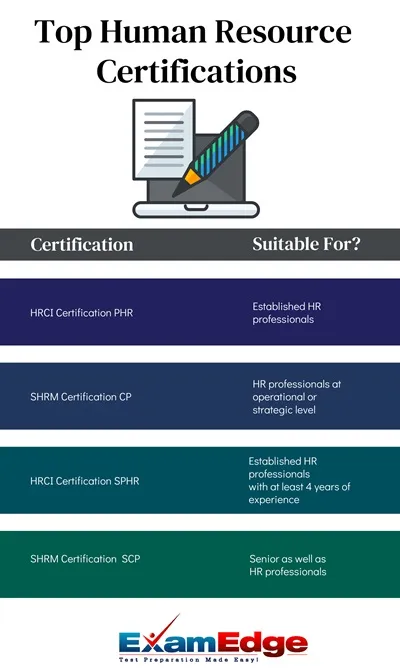SHRM CP (SHRM-CP) Practice Tests & Test Prep by Exam Edge - Blogs
Based on 40 Reviews
- Real Exam Simulation: Timed questions and matching content build comfort for your SHRM CP test day.
- Instant, 24/7 Access: Web-based SHRM Certified Professional practice exams with no software needed.
- Clear Explanations: Step-by-step answers and explanations for your SHRM exam to strengthen understanding.
- Boosted Confidence: Reduces anxiety and improves test-taking skills to ace your SHRM Certified Professional (SHRM-CP).

Exam Edge Blogs for SHRM Certified Professional

How to Study for the SHRM CP Exam
Ready to prepare for your SHRM-CP exam? Here at Exam Edge, we're here to offer our assistance. In this blog post, you'll discover everything there is ...
Read More
How to Get SHRM Certified: A Step-By-Step Guide for Success
Earning a certification from the Society for Human Resource Management (SHRM) can help you reach for higher HR career prospects. This comprehensive gu...
Read More
The Difference Between SHRM-CP and SHRM-SCP: A Guide
If you're pursuing a career in Human Resources (HR), you may have come across the acronyms SHRM-CP and SHRM-SCP. The SHRM-CP (Society for Human Resour...
Read More
Navigating the Differences Between HRCI and SHRM Certifications: A Comprehensive Guide
Are you looking for a job in Human Resources (HR), certifications play a pivotal role in demonstrating proficiency, credibility, and career advancemen...
Read More
Study Tips for Taking SHRM Certified Professional Exam
Human Resources workers are the unsung heroes of the professional world. Their knowledge and skills are instrumental to the daily operations of countl...
Read MoreExam Edge Blogs for SHRM Certified Professional

How to Study for the SHRM CP Exam
Ready to prepare for your SHRM-CP exam? Here at Exam Edge, we're here to offer our assistance. In this blog post, you'll discover everything there is ...
Read More
How to Get SHRM Certified: A Step-By-Step Guide for Success
Earning a certification from the Society for Human Resource Management (SHRM) can help you reach for higher HR career prospects. This comprehensive gu...
Read More
The Difference Between SHRM-CP and SHRM-SCP: A Guide
If you're pursuing a career in Human Resources (HR), you may have come across the acronyms SHRM-CP and SHRM-SCP. The SHRM-CP (Society for Human Resour...
Read More
Navigating the Differences Between HRCI and SHRM Certifications: A Comprehensive Guide
Are you looking for a job in Human Resources (HR), certifications play a pivotal role in demonstrating proficiency, credibility, and career advancemen...
Read More
Study Tips for Taking SHRM Certified Professional Exam
Human Resources workers are the unsung heroes of the professional world. Their knowledge and skills are instrumental to the daily operations of countl...
Read More

